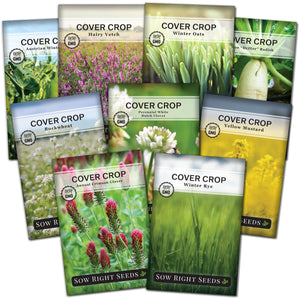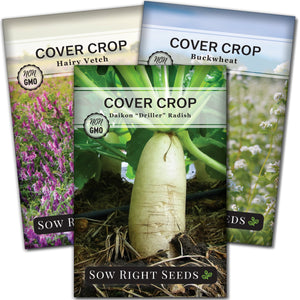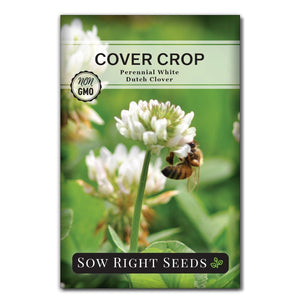7 Reasons Why You Should Grow Winter Rye as a Cover Crop
Cover crop growing tipsWinter rye can be a great boon to your garden. Let’s look at 7 reasons to consider using winter rye in your garden.

Winter Rye as a Cover Crop
Winter rye is a versatile and hardy cereal grain and cool-season grass. It’s closely related to both wheat and barley, and it can be grown as a cover crop, grain crop, or even as a forage crop for animals. It’s especially cold-hardy, which makes it a good choice for planting in the fall when you’ve finished harvesting after the peak growing season.
Improves Soil Texture
This hardy plant grows quickly, adding organic matter to the soil as it breaks down. The roots of winter rye also help to aerate the soil, allowing for better water infiltration and reduced compaction. During the growing season, your plants will benefit from looser, healthier soil.
Boosts Soil Fertility
Winter rye has a knack for capturing and storing vital nutrients like nitrogen, phosphorus, and potassium. When you till the winter rye into your soil, these nutrients become available for your plants to use. This means a more fertile garden and, ultimately, a more bountiful harvest.

Prevents Erosion
Winter rye not only builds soil, it also preserves it. If you're dealing with sloped plots or raised beds, winter rye is a game-changer. Its deep, fibrous roots help anchor the soil, preventing erosion and the leaching of nutrients.
Weed Control
A winter rye cover crop is a natural way to suppress weeds in your garden. Its rapid growth quickly forms a dense, green carpet that blocks sunlight, making it difficult for weeds to take hold and making planting season much easier.
Pest Deterrent
Winter rye cover crop is a natural pest deterrent. Many harmful insects, such as root-knot nematodes and certain pests that attack vegetable crops, are discouraged by the presence of winter rye.

Adaptable to Various Garden Conditions
Winter rye can tolerate a wide range of soil types and conditions. It's easy to plant and maintain, and it can be cut and tilled under at any growth stage. This adaptability makes it an excellent choice for a cover crop in small plots, container gardens, or large allotments.
Extended Growing Season
Since winter rye is so cold-tolerant, it allows you to build your soil during the off-season. By growing winter rye from fall until spring, you’re able to harness its benefits without much extra work at all.
How to Grow and Use Winter Rye as a Cover Crop

Growing winter rye is simple and requires minimal maintenance.
- To plant, broadcast the seeds evenly over your garden in the fall.
- Soil temperature should be 45-65ºF.
- Water the area and lightly rake the seeds into the soil.
- Seeds should germinate in 5-10 days.
- Winter rye can be cut and tilled under at any growth stage, but it's best to do so before the plant begins to produce seeds, or else you may have volunteers.
- When spring arrives, work the winter rye into the soil. You can press it down with crimping or mow it. You'll be ready to plant your spring and summer crops.
Winter rye can also be combined with other cover crops to create a more diverse mix for your garden. It can pair well with legumes like hairy vetch, brassicas like mustard or driller radish, or other grasses like oat or barley.

Whether grown alone or in tandem with other cover crops, winter rye is an easy, beneficial cover crop to try in your garden. It’s an excellent choice for winter ground cover, particularly in cold climates.
Add winter rye as a cover crop to your garden in the fall, and you’ll be rewarded with more fertile soil with fewer weeds and pest issues the next growing season.









Leave a comment